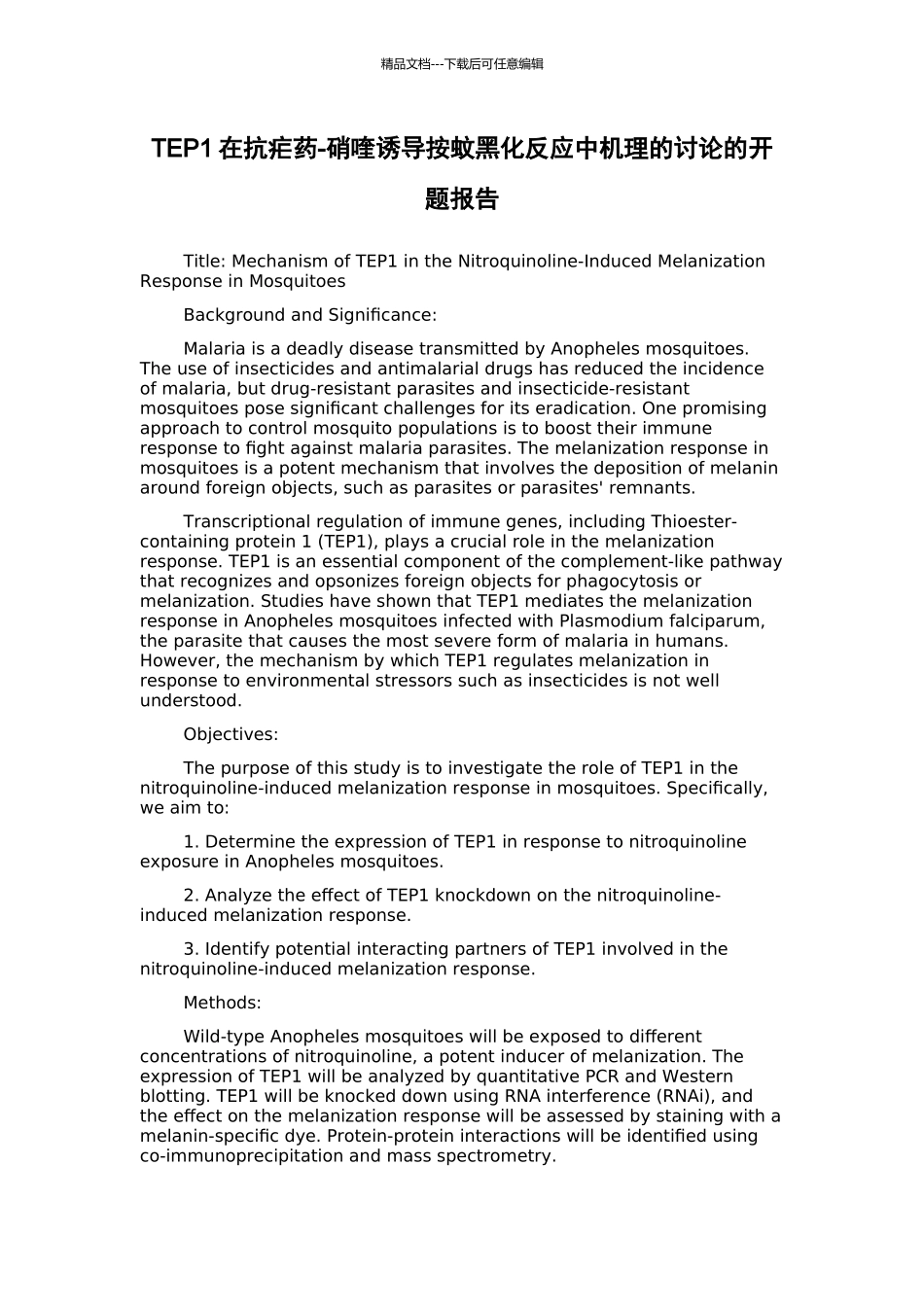精品文档---下载后可任意编辑TEP1 在抗疟药-硝喹诱导按蚊黑化反应中机理的讨论的开题报告Title: Mechanism of TEP1 in the Nitroquinoline-Induced Melanization Response in MosquitoesBackground and Significance:Malaria is a deadly disease transmitted by Anopheles mosquitoes. The use of insecticides and antimalarial drugs has reduced the incidence of malaria, but drug-resistant parasites and insecticide-resistant mosquitoes pose significant challenges for its eradication. One promising approach to control mosquito populations is to boost their immune response to fight against malaria parasites. The melanization response in mosquitoes is a potent mechanism that involves the deposition of melanin around foreign objects, such as parasites or parasites' remnants.Transcriptional regulation of immune genes, including Thioester-containing protein 1 (TEP1), plays a crucial role in the melanization response. TEP1 is an essential component of the complement-like pathway that recognizes and opsonizes foreign objects for phagocytosis or melanization. Studies have shown that TEP1 mediates the melanization response in Anopheles mosquitoes infected with Plasmodium falciparum, the parasite that causes the most severe form of malaria in humans. However, the mechanism by which TEP1 regulates melanization in response to environmental stressors such as insecticides is not well understood.Objectives:The purpose of this study is to investigate the role of TEP1 in the nitroquinoline-induced melanization response in mosquitoes. Specifically, we aim to:1. Determine the expression of TEP1 in response to nitroquinoline exposure in Anopheles mosquitoes.2. Analyze the effect of TEP1 knockdown on the nitroquinoline-induced melanization response.3. Identify potential interacting partners of TEP1 involved in the nitroquinoline-induced melanization response.Methods:Wild-type Anopheles mosquitoes will be exposed to different concentrations of nitroquinoline, a potent inducer of melanization. The expression of TEP1 will be analyzed by quantitative PCR and Western blotting. TEP1 will be knocked down using RNA interference (RNAi), and the effect on the melanization response will be assessed by staining with a melanin-specific dye. Protein-protein interactions will be identified using co-immunoprecipitation and mass spectrometry.精品文档---下载后可任意编辑Expected Outcomes:This study will provide insights into the mechanism by which TEP1 regulates the melanization response in mosquitoes exposed to environmental stressors such as insecticides. Moreover, the identification of potential interacting partners of TEP1 will contribute to a better understanding of the regulation of immune responses in mosquitoes. The findings from this study could inform the development of novel strategies to control mosquito populations and prevent the transmission of malaria.

